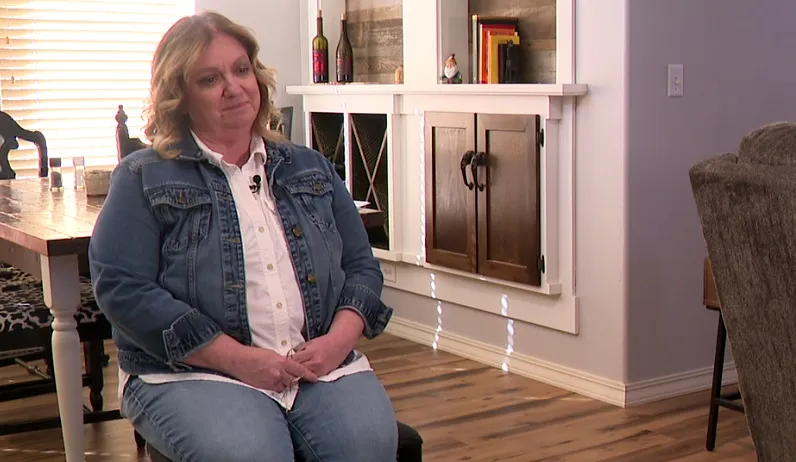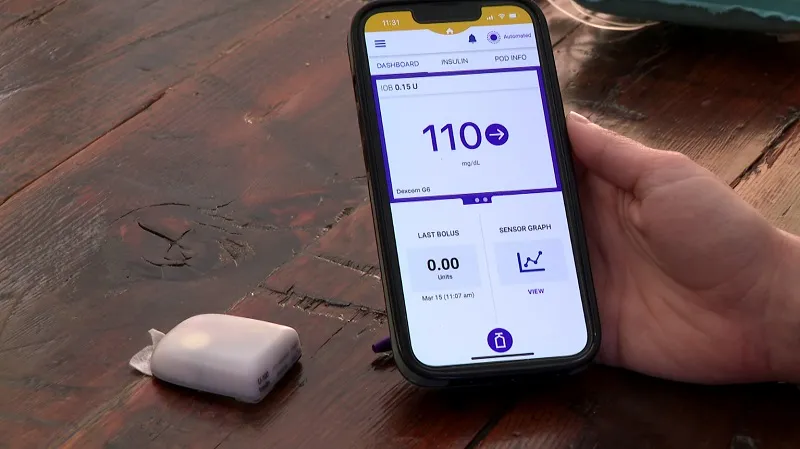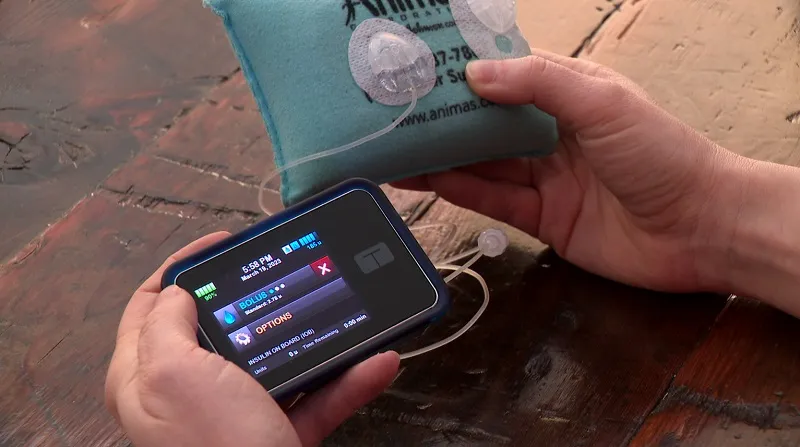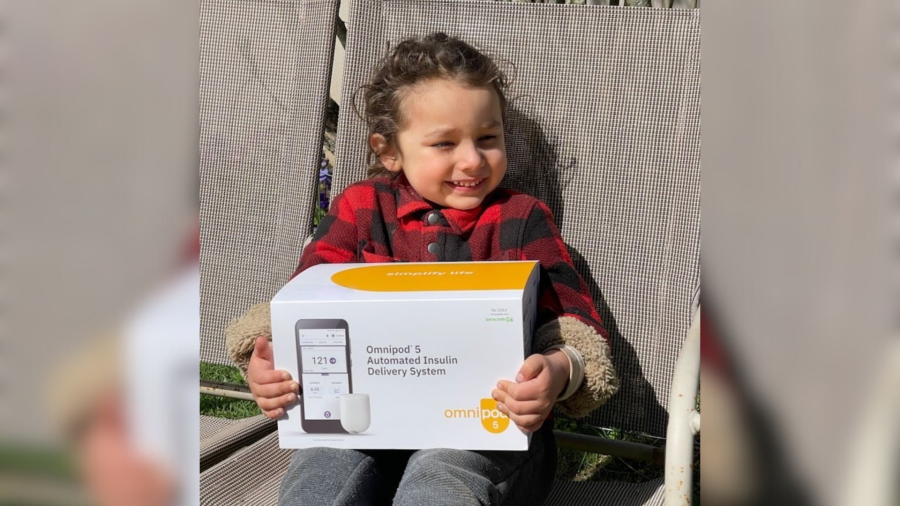PORTLAND, Ore. (KOIN) — The Torres family, Carmelo and Celeste, have two kids, Indigo and Phoenix. About a year ago, when Phoenix was 3, they learned he had type 1 diabetes.
Type 1 diabetes is an autoimmune disorder that usually develops in early childhood. The body starts to attack itself. The pancreas does not produce enough insulin, the hormone that regulates blood sugar levels.
“It’s never easy to accept these big changes that happen with your kids,” Carmelo told KOIN 6 News. “Type 1 is much more involved and it’s more dangerous and many things that people don’t realize.”

Since his diagnosis, Carmelo and Celeste have diligently monitored his blood sugar levels 24/7, managing it with up to 8 insulin injections a day to survive.
“But for Phoenix, it’s frustrating because we want to get him in the best control possible with his blood sugar and what really helps that is some of these new devices,” Carmelo said.
Insulin pumps improving
New life-changing diabetes devices are on the market. These more advanced insulin pumps can deliver precise amounts of medicine to a patient without the need of needles or finger-pricks.

Kelly Paine-White, a certified diabetes care and education specialist at OHSU, turned her daughter’s type 1 diabetes diagnosis nearly 20 years ago into a career. She now helps other patients navigate this disease, helping to create better outcomes for kids like Phoenix, so they don’t suffer the consequences of high blood sugar.
“It’s hard on our heart. It’s hard on our vessels. It’s hard on our kidneys. It’s really damaging to the eyes,” Paine-White said. “People can go blind with long term high blood sugar.”
Poorly managed diabetes can also damage vessels in patients’ feet, which can later lead to amputations.
“My wish would be that insurance would be more proactive and that we would be looking at ‘How do we keep people healthy?’ instead of ‘What do we do when they do need an amputation?'” she said.
Who covers the insulin pumps
The newest medical technology, the Omnipod 5 insulin pump, is the perfect preventative measure to ensure a healthier life for kids like Phoenix, Paine-White said. It’s waterproof, automated, and can easily attach to the body. The pump companies are even coming out with apps so patients or their parents can manage blood sugar from their smartphone.

But CareOregon — Phoenix’s insurance provider through the Oregon Health Plan, denied coverage and called the pump a “convenience item.”
“I’ve literally been on the phone 3 days a week for almost a year trying to get people to give me any kind of breadcrumb to figure out if we can get covered, if we can get partial coverage, if it’s a yes or no,” Carmelo said.
Instead, his insurance only offered to cover a less-advanced pump, one with a long tube and device that hangs off a patient’s body and is not waterproof. Paine-White said that device is not practical for little kids or even adults.
“Their pump could get pulled off, which would be painful. Then they have no insulin running in their system,” she told KOIN 6 News. “How safe is it to have a 4-year-old running around with a tube attached to a device that he has to sleep with?”

If the Torres family’s address was in another part of Oregon with a different ZIP code, Paine-White said, Phoenix would be able to get the better pump.
“There’s this huge inequity that depending on where you live in the state of Oregon, the insurance that covers the people who are the most at risk is picking and choosing what you can have,” she said. “They’re going to make those decisions about what do you deserve? That’s what it feels like to me. Again, these are already families that are at a disadvantage economically that can’t afford to pay for something like that out-of-pocket.”
Coordinated Care Organizations
Patients on the Oregon Health Plan, the state’s version of Medicaid, receive health care from Coordinated Care Organizations, or CCOs.
There are 16 CCOs across Oregon and some counties have more than one. Paine-White said “13 out of the 16 CCOs are covering all the insulin pumps.”
CareOregon is responsible for the 3 CCOs not covering the latest insulin pumps.
“We just we want to have him in the best care possible and we’re just going to keep fighting to get him the coverage he needs,” Carmelo said.

KOIN 6 News contacted CareOregon by phone and email. After a couple weeks going back and forth, CareOregon officials said they would be making the necessary changes to get the latest insulin pump covered for all their diabetic patients by the end of this spring.
As a result, Phoenix has been approved and now has the new insulin pump.

“Phoenix is my youngest baby and to know that he has control over his sugar and not have to have so many injections and the flexibility to be as free as any other kid, it means a whole lot to us,” Carmelo said. “We have so much gratitude to you all for taking this story on.”
Care Oregon full statement
At CareOregon, our number one goal is to help members get the best care available. As a healthcare organization that largely serves Oregon Health Plan members, we approach every aspect of our work with health equity in mind. (The Oregon Health Plan is the state’s version of Medicaid. It is a safety net health insurance program for low-income residents.)
Since late-summer 2022, our team has been working to create a process to make the new OmniPod 5 available to our members and to do so as equitably as possible.
As a disposable diabetes pump (to be worn and thrown away after use), this product doesn’t easily fit into any of the categories/services that we use to deploy resources to members.
All other diabetes pumps on the market, including earlier versions of the OmniPod, are distributed through a type of vendor who handles “durable medical equipment” or DME. The path to submit a request for a pump and have an approved durable medical equipment vendor distribute it is well established and effectively used to serve thousands of members each year.
But as a disposable device, the OmniPod 5 requires us to create a new path. It is the only product of its kind that would be thought of as a prescription—meaning that it would need to be dispensed by a pharmacist and that our network of pharmacies would need to be ready to fulfill prescription requests and educate members on how to use their new pump. We’ve heard from our pharmacy network that the product has not been consistently stocked and that additional training for pharmacists may be needed.
Working with our pharmacy network to assess readiness is part of our typical process to bring on new resources to members.
Since this product was effectively launched in March 2022, we have received 25 provider requests for this device. These requests have been a small portion of total requests for diabetes pumps during this period (~8% of total requests were for the OmniPod 5). In some cases, we were able to fulfill requests for this device, but identified a need for a more uniform process so the product is more readily accessible to members and can be accessed in an equitable way.
Staff across a variety of teams have been working to make this product more widely available to members since summer 2022. In recent months, we have seen a growing interest from our providers in prescribing this product and growing readiness of the pharmacy network to help us deploy it to members. CareOregon is on track to make the OmniPod 5 available to members no later than this spring.
As part of our typical process to make services/resources more available to members, we will conduct a re-review of recent relevant requests and will reach out to individuals who would qualify for the item under the newly established process.